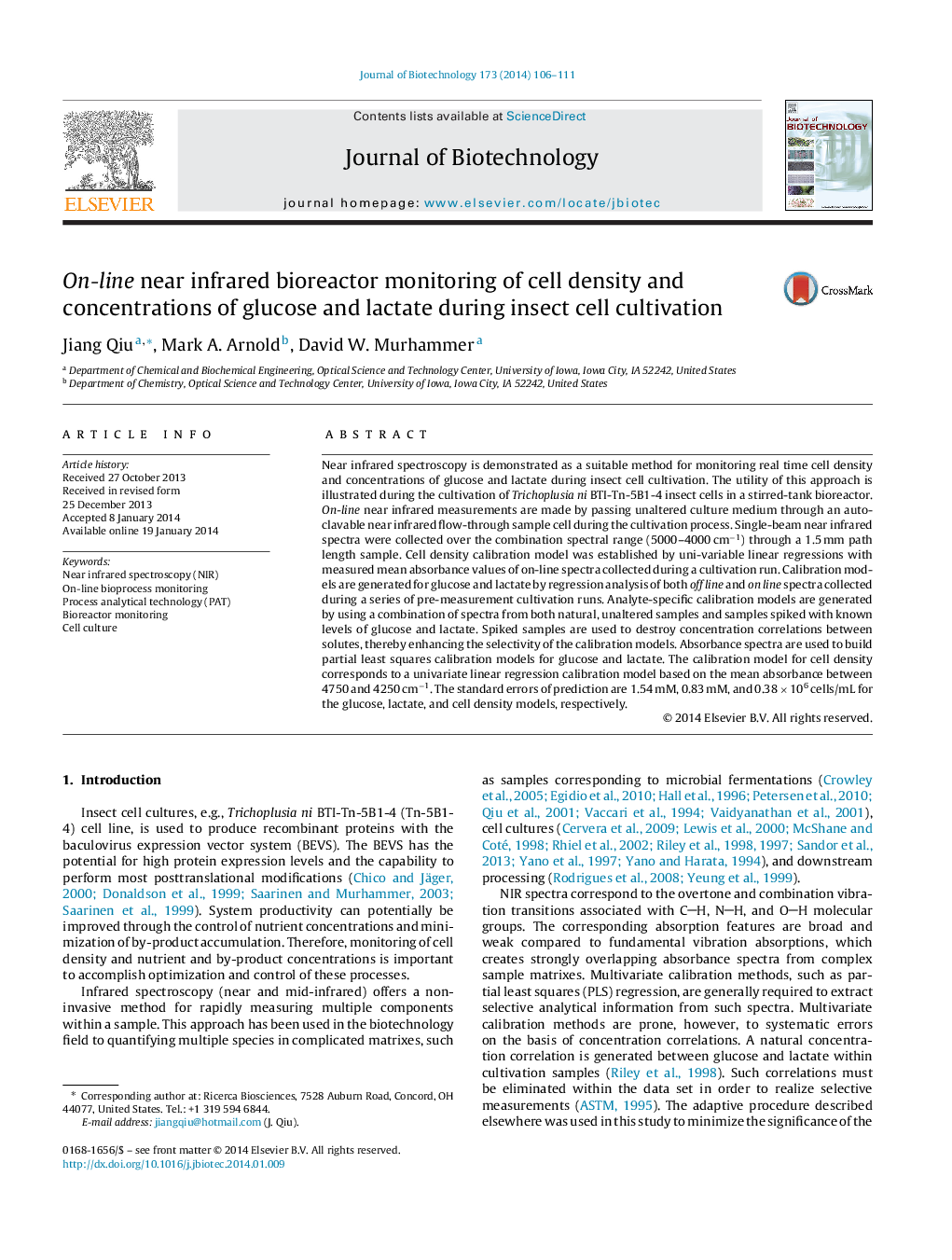| Article ID | Journal | Published Year | Pages | File Type |
|---|---|---|---|---|
| 6491629 | Journal of Biotechnology | 2014 | 6 Pages |
Abstract
Near infrared spectroscopy is demonstrated as a suitable method for monitoring real time cell density and concentrations of glucose and lactate during insect cell cultivation. The utility of this approach is illustrated during the cultivation of Trichoplusia ni BTI-Tn-5B1-4 insect cells in a stirred-tank bioreactor. On-line near infrared measurements are made by passing unaltered culture medium through an autoclavable near infrared flow-through sample cell during the cultivation process. Single-beam near infrared spectra were collected over the combination spectral range (5000-4000Â cmâ1) through a 1.5Â mm path length sample. Cell density calibration model was established by uni-variable linear regressions with measured mean absorbance values of on-line spectra collected during a cultivation run. Calibration models are generated for glucose and lactate by regression analysis of both off line and on line spectra collected during a series of pre-measurement cultivation runs. Analyte-specific calibration models are generated by using a combination of spectra from both natural, unaltered samples and samples spiked with known levels of glucose and lactate. Spiked samples are used to destroy concentration correlations between solutes, thereby enhancing the selectivity of the calibration models. Absorbance spectra are used to build partial least squares calibration models for glucose and lactate. The calibration model for cell density corresponds to a univariate linear regression calibration model based on the mean absorbance between 4750 and 4250Â cmâ1. The standard errors of prediction are 1.54Â mM, 0.83Â mM, and 0.38Â ÃÂ 106Â cells/mL for the glucose, lactate, and cell density models, respectively.
Keywords
Related Topics
Physical Sciences and Engineering
Chemical Engineering
Bioengineering
Authors
Jiang Qiu, Mark A. Arnold, David W. Murhammer,
